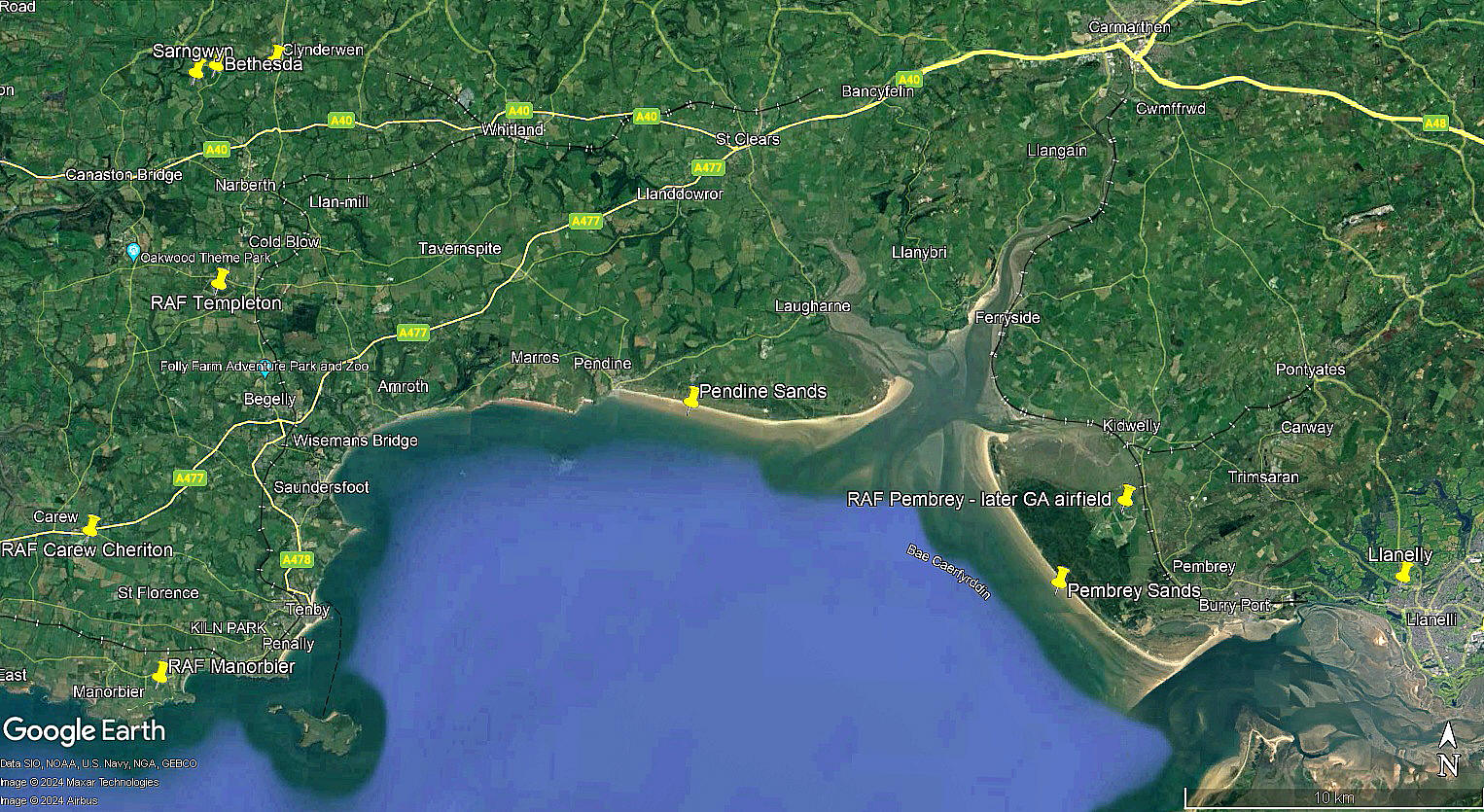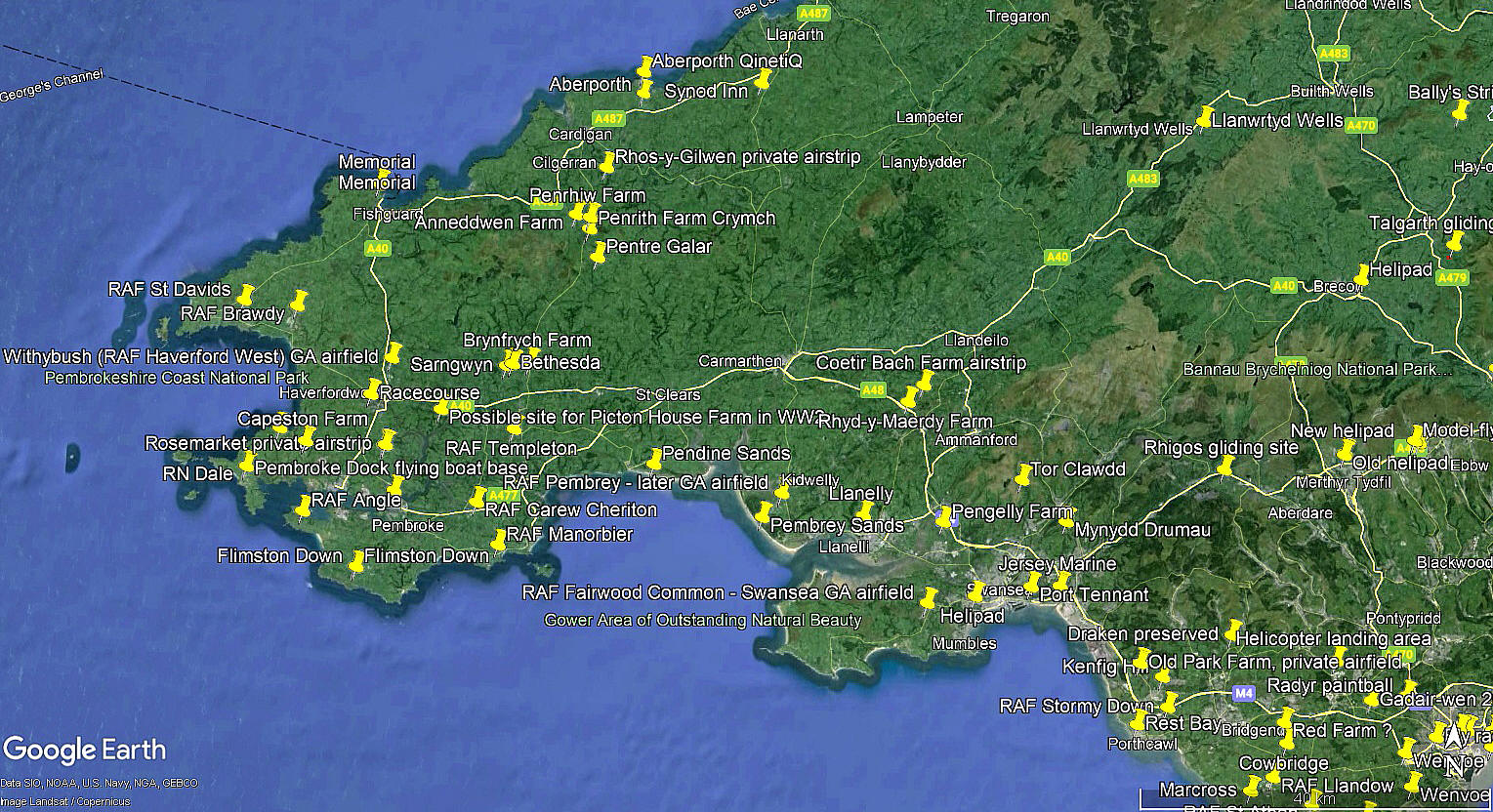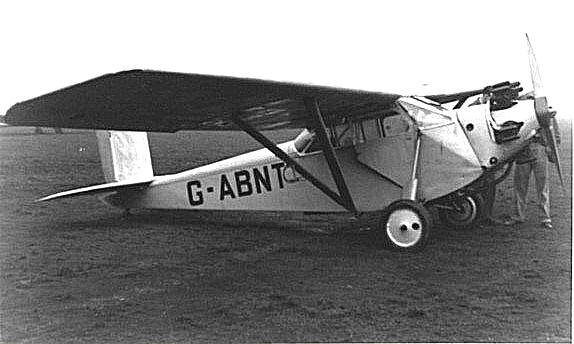Pendine Sands
PENDINE SANDS: Location used for many GA flights and at least one notable record breaking attempt
Note: The local view was obtained from Google Earth ©. The local area and area views are from my Google Earth © derived database.
NOTES: “Point of departure for a trans-Atlantic flight attempt 22nd July 1933”
It was many years after making this cryptic note; before I discovered the details. Involving two of the most famous pilots, (then married), in the world at that time.
Huge crowds gathered to witness the departure. It was Amy Mollison, (then neé Johnson), who departed with her husband Jim Mollison in their DH.84 Dragon (some mistakenly say it was a DH.89A Dragon Rapide), G-ACCV Seafarer to fly the Atlantic non-stop to New York in the USA. Bear in mind that the few then successful East-West flights had landed in Canada. For some very odd reason Jim Mollison gave the order to load 35 gallons less fuel than had been calculated to achieve the flight.
Just like his wife, they both appeared to have had a serious mental defect towards making rational decisions regarding flight planning. This said, although having served as an airline pilot in Australia, Jim Mollison by this stage was a serious alcoholic, so this probably explains it? With Amy it appears she probably suffered from Aspergers syndrome.
They didn’t make it all the way to New York, crash landing having run out of fuel in/near Bridgeport, Connecticut, fifty five miles short of New York and both of them getting badly injured. But, they did make it to the USA. Having recovered it seems they were both fêted and treated to a ‘ticker tape’ welcome along Wall Street in New York. In his terrific book ‘Taking to the Skies’ Graham Smith tells us that the original project was actually far bolder – to fly first to New York, then back direct to Baghdad before returning to CROYDON, a round trip of 12,000 miles and obviously planned to take advantage of the westerly trade winds when heading back east across the Atlantic.
It appears that John Lock was the Hillman’s Airways pilot for a charter from Pathe News who sent a cameraman to cover the Mollison’s departure, presumably using a Puss Moth? I wonder if any other aircraft flew in to witness the event?
A LOVELY STORY
This photo was obtained from the Dave Welch Collection.
Mr Graham Frost, a great friend of this 'Guide', told me a story about when as a youngster on holiday, he went to the Rees Bakery in Camarthen to ask if he could see the aircraft stored there. This caused much amusement amongst the customers, but Mrs Rees appeared and very kindly did indeed show him the aircraft. This being the very rare, and in its own way unique, being the Civilian CAC.1 Coupe Mk.2, G-ABNT.
Only two versions were built up near Hull, the Mk.1 and the Mk.2. The Mk.2 was registered to Mr Glyn B Rees from 12.10.33 until 01.12.46, and this goes to show how official records can, sometimes, be very misleading. They do not indicate if an aircraft is in any way airworthy, or indeed still flying up to the point when the registration is officially cancelled.
It appears that Mr Rees operated G-ABNT, although based in Cardiff, (presumably at PENGHAM MOOR?), using it for joy-rides from PENDINE SANDS, and kept in a garage by the sands. One passenger at a time. It appears that its last flight was from Pendine Sands to Cardiff on the 21st February 1937. It was then found that the engine was damaged and it was dismantled and put into store behind the bakery.
Much later the remains were acquired and G-ABNT was restored to flying condition. Presumably by Shipping and Airlines Ltd, Hangar 513 at BIGGIN HILL in KENT, who registered it again on the 29th March 1978. It appears it was still flying in 2024.
We'd love to hear from you, so please scroll down to leave a comment!
Leave a comment ...
Copyright (c) UK Airfield Guide



















